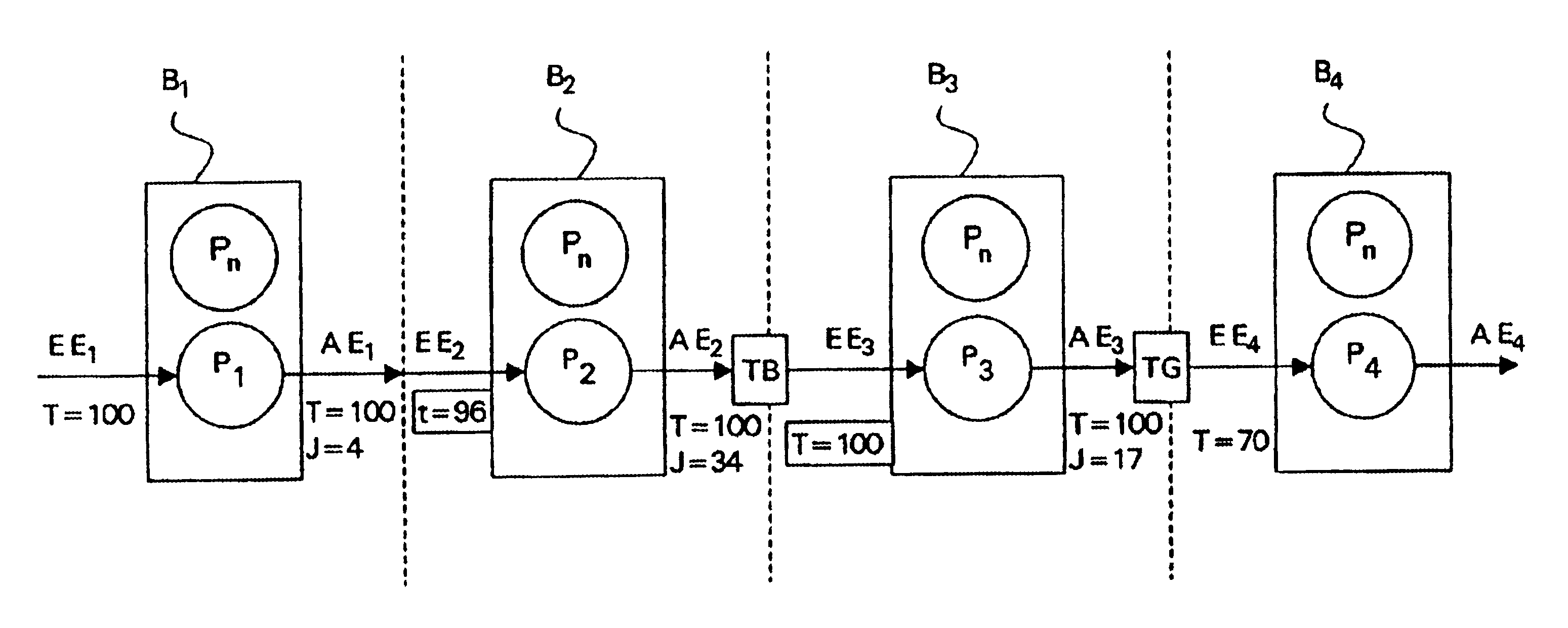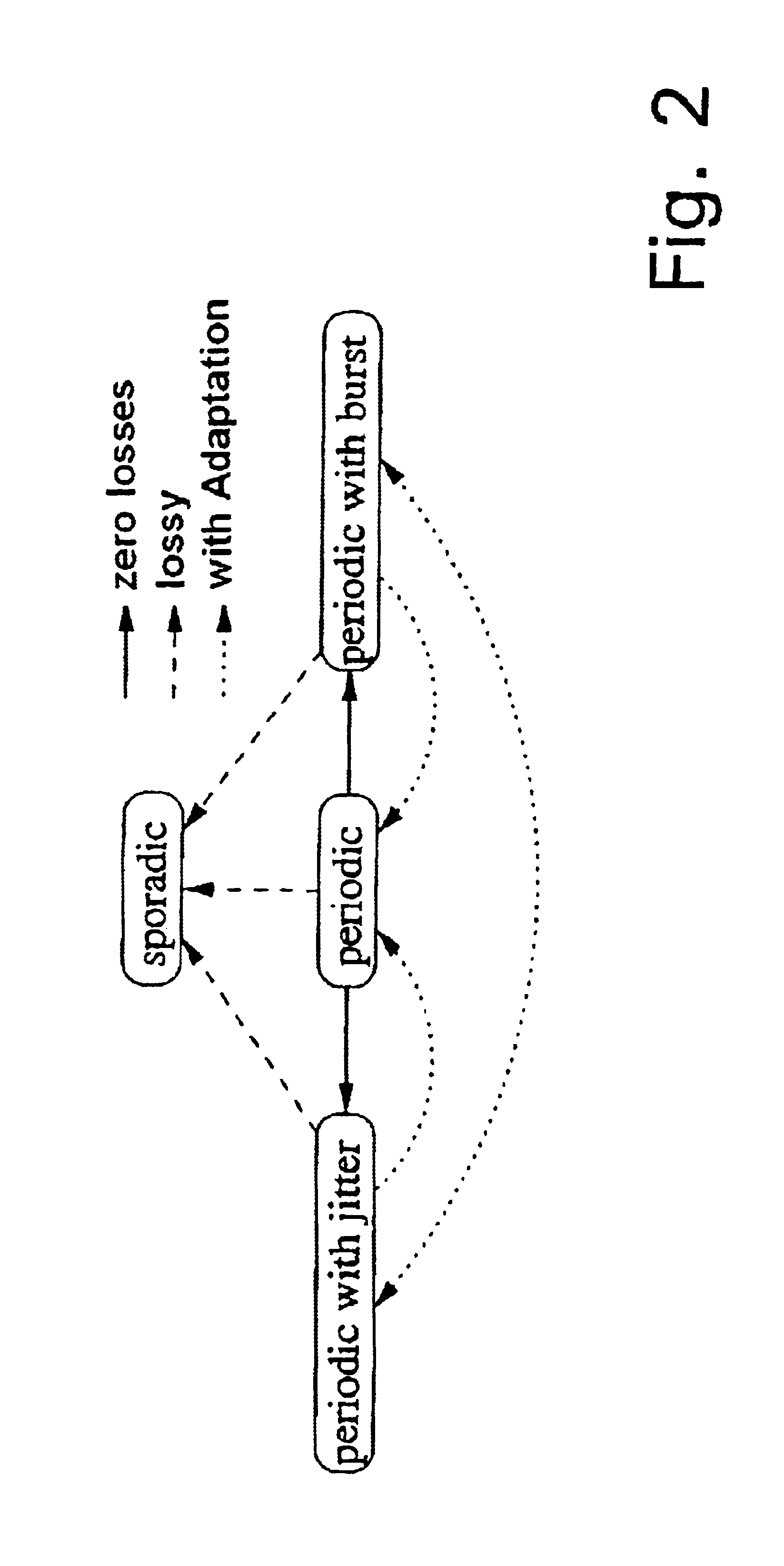Method for analysis of the time response of complex distributed systems
a distributed system and time response technology, applied in the field of time response analysis of complex distributed systems, can solve the problems of inherently heterogeneous internal sequences, complex digital systems may be time-critical, and the conventional design of distributed digital systems is thus inherently heterogeneous in terms of its components, so as to achieve the effect of improving efficiency and improving efficiency
- Summary
- Abstract
- Description
- Claims
- Application Information
AI Technical Summary
Benefits of technology
Problems solved by technology
Method used
Image
Examples
Embodiment Construction
[0040]FIG. 1 shows a block diagram with a first basic component B1 and a downstream basic component B2. A basic component B for the purposes of the invention includes a set of alternating processes P1, P0 and a sequence planning or scheduling strategy RSST1 (Resource Sharing Strategy) for planning and for defining the access to jointly used resources, such as a processor or a data bus. The output event stream AE at the output of the basic component B1 is defined by the process P1 and the sequence strategy RSST1 for the basic component B1. The associated output event model EMx and the output event stream AE can be determined by known local analysis methods.
[0041]An input event model EMy for the input event stream EE at the input of the downstream basic component B2 in an event model class is required for local analysis of the downstream basic component B2, which event model class can be evaluated using an analysis method which is available for the downstream basic component B2. It is...
PUM
 Login to View More
Login to View More Abstract
Description
Claims
Application Information
 Login to View More
Login to View More - R&D
- Intellectual Property
- Life Sciences
- Materials
- Tech Scout
- Unparalleled Data Quality
- Higher Quality Content
- 60% Fewer Hallucinations
Browse by: Latest US Patents, China's latest patents, Technical Efficacy Thesaurus, Application Domain, Technology Topic, Popular Technical Reports.
© 2025 PatSnap. All rights reserved.Legal|Privacy policy|Modern Slavery Act Transparency Statement|Sitemap|About US| Contact US: help@patsnap.com



